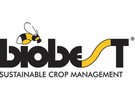It’s that time of year again when poinsettia cultivation begins. Last season, several growers ended up struggling with whitefly. Now is a good time to think about the appropriate integrated and/or biological strategy to adopt. Biobest advisor, Stefan Bohté, urges growers to first look for possible residues on their plant material before introducing biological pest control methods.
Stefan says growers must prepare for the arrival of whitefly: “We must be on the lookout and work on an adequate protection right from the start. The Biobest product range contains several products for combating whitefly. However, introducing beneficial insects immediately when the pest arrives has, in cases, proven to be a bad idea. The stock plant material is generally treated regularly by the propagator with chemical insecticides and the after-effects of any residues can inhibit beneficials from establishing on the cuttings.”
Predatory mites and parasitic wasps
Growers can benefit from gathering relevant information from their propagators. Stefan says: “Of course, a leaf sample also provides useful insight. Only when all the harmful residues have been eliminated from the plant tissues should growers start using beneficial insects.
“In the case of the soil-dwelling predatory mite Hypoaspis miles, the Hypoaspis-System works very well, in particular, against Sciarid (fungus gnats) in plants that are still small,” says Stefan. “Once the plants develop more vegetation, the predatory mite Swirskii-Breeding-System and the parasitic wasp Eretmix-System (minimum 6/m² per week) may be introduced. Following this strategy, the grower can keep whitefly well under control.” Besides this, he also emphasises the importance of careful scouting. “In the starting phase, in particular, whitefly is difficult to see,” warns Stefan. “So be sure to monitor the crop frequently and thoroughly.”
PreFeRal
To bridge the period between the ‘after-effects of residues’ and the ‘start of pest control’, Stefan advises spraying with PreFeRal WG. “By implementing this treatment right at the beginning of the growing season you kill two birds with one stone,” he says. “The residues still have some time to be eliminated, and the PreFeRal coverage is good thanks to the small size of the plants. We also recommend adding a second integrated crop protection product against whitefly to augment the effects of the fungus – this is the 1+1=3 effect.”
 Biobest Belgium NV
Biobest Belgium NV